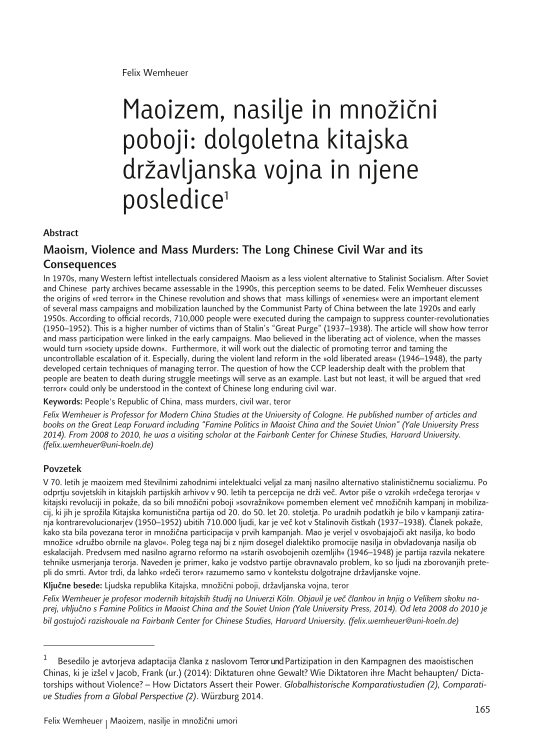In 1970s, many Western leftist intellectuals considered Maoism as a less violent alternative to Stalinist Socialism. After Soviet and Chinese party archives became assessable in the 1990s, this perception seems to be dated. Felix Wemheuer discusses the origins of »red terror« in the Chinese revolution and shows that mass killings of »enemies« were an important element of several mass campaigns and mobilization launched by the Communist Party of China between the late 1920s and early 1950s. According to official records, 710,000 people were executed during the campaign to suppress counter-revolutionaties (1950–1952). This is a higher number of victims than of Stalin’s “Great Purge” (1937–1938). The article will show how terror and mass participation were linked in the early campaigns. Mao believed in the liberating act of violence, when the masses would turn »society upside down«. Furthermore, it will work out the dialectic of promoting terror and taming the uncontrollable escalation of it. Especially, during the violent land reform in the »old liberated areas« (1946–1948), the party developed certain techniques of managing terror. The question of how the CCP leadership dealt with the problem that people are beaten to death during struggle meetings will serve as an example. Last but not least, it will be argued that »red terror« could only be understood in the context of Chinese long enduring civil war.




